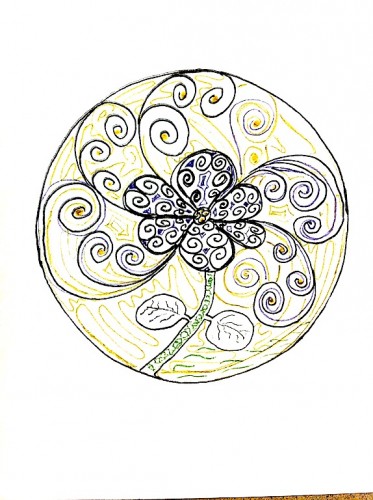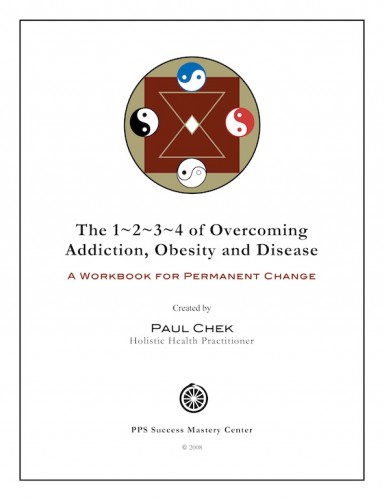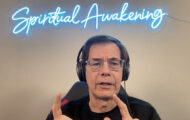LETTING GO IS LETTING GROW
Happy Thursday To You!
There is a nice buzz in the institute with a new CHEK Level 2 Practitioners Advanced Training class being facilitated here.
Chris Maund and Janet Alexander are teaching this class, so the students will get a nice variety of teaching styles and experience.
I took the day off from strength training yesterday and did tai-chi, which always feels good to me.
It’s important for everyone to remember that we don’t get stronger while we train, we get stronger while “resting from training”.
Many are under the false impression that they are getting stronger while training, and therefore, train like bandits and can’t figure out why they have so many niggling injuries, fatigue, and don’t gain strength or size as fast as they’d like.
Most forms of exercise, particularly resistance training or any form of training that results in muscle soreness are catabolic in nature. The word “catabolic” means tissue destructive.
If our anabolic (tissue restorative) energies are deficient relative to the catabolic demands we place on ourselves through our choices with diet and lifestyle (including out thoughts), each successive training session brings us deeper into catabolic debt.
The result, naturally, is an increase in fatigue, soreness and often results in negative emotional states.
When people don’t understand the nature of how yin (anabolic) and yang (catabolic) energies interact in their life and body-mind, they commonly put themselves progressively deeper into catabolic debt.
The most common reactions to being in this state (and not getting the results you thought you would get) are:
1. Increased effort with training, which is a common result from our social programming around the issues of “no pain – no gain”!
2. Increased consumption of simple carbohydrates and other forms of quick energy foods and drinks, which are mostly packaged, processed garbage!
3. Increased use of coffee, tea, cigarettes, alcohol and recreational drugs, all of which tend to increase toxic burden and add more catabolic load to the body-mind construct.
4. Increased use of medical drugs, be they over the counter types, or prescription types. Again, increasing toxicity and total body burden.
Additionally, most of these are painkillers that block incoming pain signals and lead to people falsely feeling better. This gives them license to keep training foolishly.
Eventually, the magnitude of the dysfunction(s) increase to the point that significant injury occurs. Then, there are usually increases in all the negative inputs here described.
Soon, such people find themselves running from doctor to doctor and therapist to therapist getting deeper and deeper into debt, again increasing catabolic load. And finally,
5. Relationships begin to be challenging. When people are in an over-training state, there are typically negative mental-emotional traits that are magnified. This leads to many problems in relationships.
They are usually most dramatic with those that you love, such as friends and family members.
This is because we naturally tend to be less restrictive with our moods and feelings with such people because we feel safe to let it all hang out with them.
In time, even those that love you will begin pulling away for their own safety and security. Soon, a person on this rollercoaster finds themselves feeling isolated and alone.
If this keeps on because they are too stubborn to change, drug addictions become common.

SOLUTIONS
1. First of all, change won’t occur if the desire for change isn’t greater than the resistance to change! Having a clearly defined dream, goal or objective is essential.
If you don’t know where you are going, any road will get you there.
If you aren’t sure how to go about the change or healing process, I recommend following the steps I’ve outlined in my program titled, The 1-2-3-4 For Overcoming Addiction, Obesity and Disease program.

You can acquire this program of 11 hours of audio instruction and a workbook of around 130 pages at www.ppssuccess.com
2. Look carefully at what your choices have created in your life thus far. Part of the change process is accepting your responsibility for what you create.
What few realize is that the process of changing doesn’t typically require any more effort than was applied to creating a situation that isn’t working.
It’s just a matter of reinvesting your energies into creating what you do want.
Most people spend huge amounts of energy struggling to survive the choices they make ineffectively, all the while convincing themselves that they can’t do this, or can’t do that!
By the time they realize they can’t go on any longer, they are usually exhausted.
If you wait that long, change can become very challenging; you may not have the energy to develop new neural pathways in your body-mind for change.
This is the kind of situation that leads to people having to join support groups like Alcoholics Anonymous and the likes.
3. Look for those that have accomplished the change you feel you need to make and learn from them. That’s far faster than trying to sift through mountains of information on the web, in books, etc.
4. Keep in mind that it is the nature of the Universe to be in a constant state of change. Everything changes.
The degree to which we resist change is the degree to which we experience resistance to the flow of life (TAO).
By being more open to change, by practicing little changes day to day, you become more aware of the nature of the flow of life and begin to feel more natural in the change process.
If you’ve not studied my book How To Eat, Move and Be Healthy!, I suggest starting by filling out the questionnaires in the book.
This will give you a very effective starting point for planning for making the needed changes, as well as simple, effective instructions that anyone can follow.
I encourage my clients and students to begin with small changes when they feel insecure about change. Some simple examples are:
1. If you normally argue with people over things that are non-essential and don’t really add any value to your day, try just letting them have their opinion. You don’t really gain anything by reinforcing or forcing your opinion on someone that is as resistant to change as you are.
If you take responsibility for your own inner-peace, then you also know when engaging with others in such a way that disturbs your inner-peace isn’t helpful.
2. Try sitting at a different location at the table every time you eat. It’s simple, but you’d be amazed at how many people resist even such a small change!
3. Try eating with your other hand.
4. Try eating new foods that you’ve never had before. Go to some foreign markets. Try some Chinese markets, East Indian markets, Greek markets, etc. Ask for help to find new things. I’ve had some lovely surprises eating this way!
5. Try being more creative with your sex life. Most people that resist change also resist change in bed and can become very boring partners! Are you one of them?
6. Try cleaning your office, car, and/or home. Changing your external environment such that it is more beautiful, flowing and clean immediately changes your internal environment. Start today!
7. Try fasting for a day. It won’t kill you and you will probably be amazed at how much better you feel by not overloading your organ systems for a change.
When you start eating again, keep to simple meals made of real food.
Then, when you begin introducing some of your comfort foods back in, you may well find that they are stressful to you; you didn’t realize it before because you were so tired and wound up your immune messages weren’t getting to your conscious mind.
I’d love to hear about your process as you make the changes you need to live and enjoy a vital, healthy life!
That’s my little message for the day!
Love and chi,
Paul Chek














Find me on the web